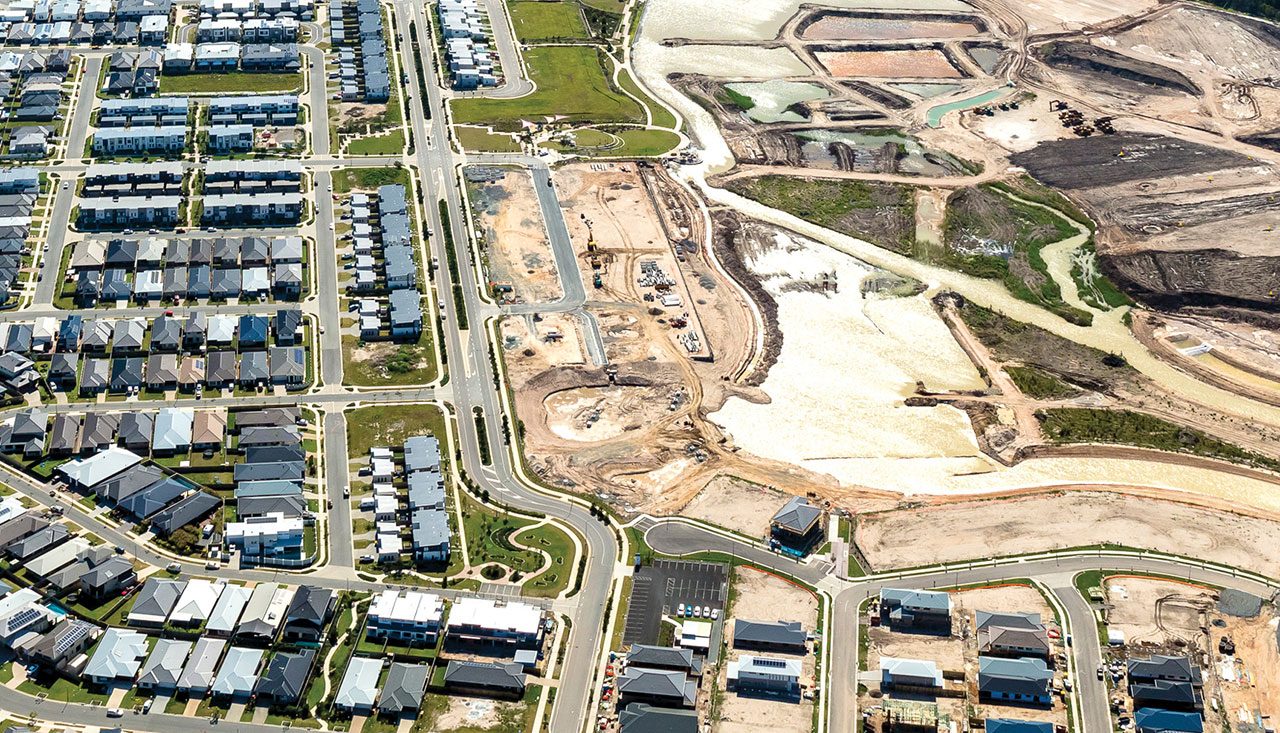This article is from the Australian Property Journal archive
AUSTRALIA will fall nearly one-third short of the National Housing Accord target, one major industry group says, as June’s building approval numbers made for grim reading amid a national housing crisis – although the bottom of the cycle may have been reached.
Australian Bureau of Statistics data released yesterday showed a 6.5% fall in total dwelling approvals in June, to 13,237, on the eve of the official start of the five-year National Housing Accord. The Accord aims to deliver 1.2 million homes around the country and turbocharge housing supply at a time of record low vacancy rates, high rents and stretched affordability, but is already hampered by difficult construction industry conditions.
Yesterday’s official data showed that NSW (down by 19%) and Western Australia (down by 5.1%) led June’s decline. Queensland was the standout, up 16.1%.
The June fall was seen mostly in apartments and townhouses, which slumped by 19.7% over the month to 9,078, driven by Sydney and Melbourne. The segment is tracking at 22.1% below last year’s figure.
Detached homes slipped by 0.5% in June to 3,918, to be 11.0% higher year-on-year, making for an annual fall of 3.7% across all dwellings.
It means only 162,892 homes were approved in the 2024 financial year – the weakest volume since the 2012 financial year, and some 177,000 short of the quarterly target of the National Housing Accord.
Maree Kilroy, senior economist for Oxford Economics Australia, told Australian Property Journal, “We think that, in seasonally adjusted terms, that we’ve hit the worst of the results”.
Oxford Economics expects positive momentum to gain in 2025, but the improvement will be “slow going”, as entrenched trade labour shortages place an impactful speed limit on the early-stage recovery.
“Unfortunately, there isn’t a big lever that can be pulled in the short term. It’s somewhat entrenched,” Kilroy told Australian Property Journal.
“There will be a slight improvement, but they’ll be largely flat, and then it’ll really start to improve more materially when those interest rate cuts come through, which we’re expecting early next year.”
Interest rate cuts will be joined by federal and state government policy support in providing assistance.
All eyes will be on today’s quarterly inflation data, which Kilroy said is “the key data point” the Reserve Bank of Australia will be watching ahead of next week’s interest rate meeting.
385,000 homes short
Master Builders Australia chief economist Shane Garrett said annual building approvals are now at their lowest levels in over a decade “despite strong signals from government to increase housing supply”.
“If approvals continue at this level, Australia will fall 385,000 homes short of the 1.2 million Housing Accord target.”
Master Builders Australia CEO Denita Wawn said, “It’s clear more needs to be done, particularly in policy areas outside of the housing portfolio which are driving up building costs and blowing out construction times”.
“Addressing the housing crisis requires a holistic approach with input from multiple portfolios from industrial relations, infrastructure, procurement, immigration, to skills and training.
“The industry is being held back by worker shortages, slow planning approvals and critical infrastructure delays, as well as high taxes and charges deterring investment. Combined with industrial relations challenges and recent revelations of alleged union misconduct, costs and building times are blowing out.”
The powerful CFMEU has been blamed for cost increases in the industry.
Productivity in the industry has fallen 18% in the past decade, while over the last five years building costs have increased by 40%.
Australia needs an additional 83,000 tradies to meet the National Housing Accord target, according to the Housing Industry Association.
Col Dutton, national president of Urban Development Institute of Australia, said the official statistics are a “stark reminder that we need to remove front end barriers to housing supply”.
This includes incentivising the states to streamline planning across the continuum including halving planning times and accelerating zoning to convert undeliverable zoned land to housing faster, streamline environmental approvals and unlocking enabling and supporting infrastructure.”




